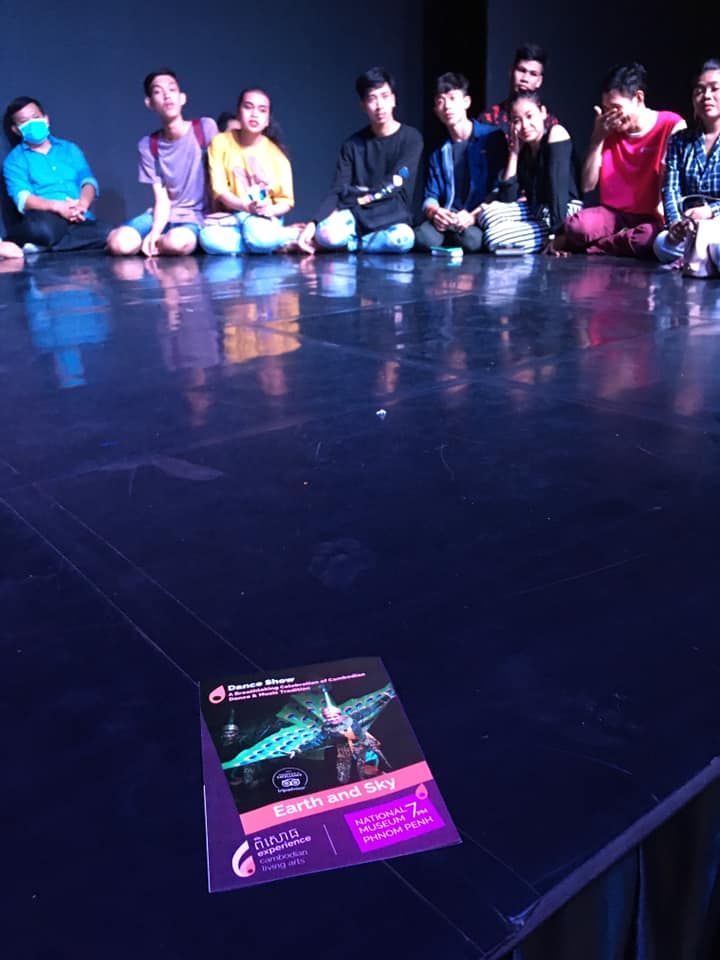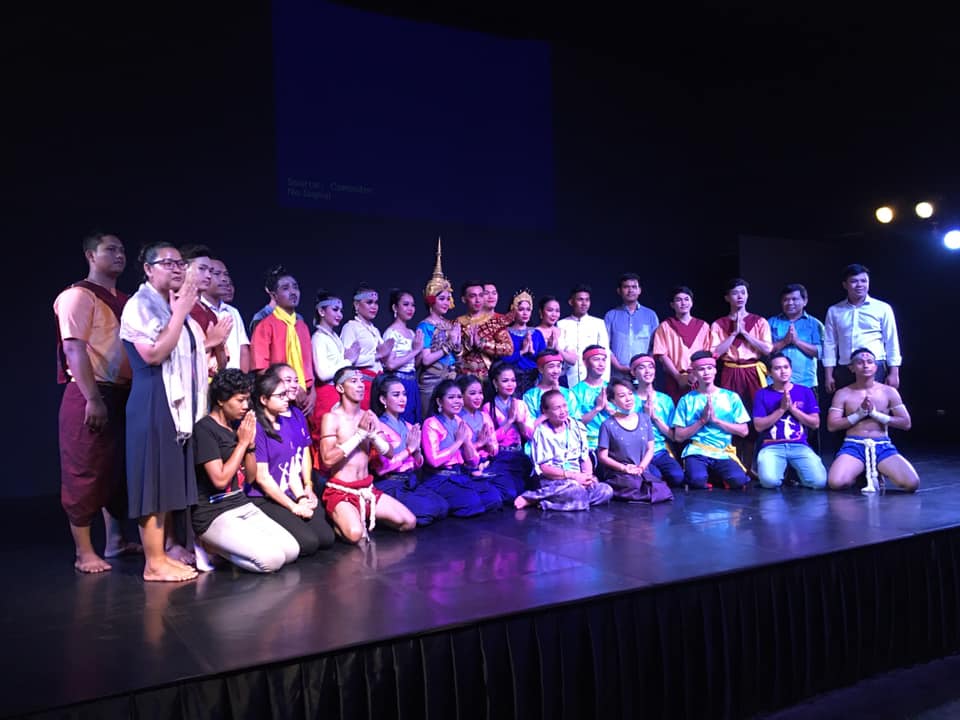On March 18th, the Cambodian government delivered clear instructions that all performing arts venues, cinema, and KTV must temporarily close in an attempt to stop the rise of Coronavirus in the country. That evening, the lights went on for Cambodian Living Arts’ last performance of “Earth and Sky,” a traditional Cambodian dance performed at the National Museum.
Before we closed—not knowing when we could return to the stage—I wanted to be with these artists who have so passionately performed for thousands of local and international audiences. People of all ages and nationalities have shared these wooden benches, cellphone cameras in hand, capturing moments of joy, admiration and tears. Every scene that has graced this stage has transported its audience through the times and traditions of Cambodia. But tonight, only 20 guests were in the audience—confronting their fears and hoping to make the best of their time in Cambodia.
Seeing this, I wanted time to stop so I could be filled with the sense of peace and emotion this performance brought me. As the lights dimmed, my heart beat with the rhythms of the drums. Collectively, we, the audience, were admiring the centuries-old gestures of the apsara dancers, learning epic stories of the Ramayana, and taking in the glimmer of sparkling and colorful costumes.
Most touching though was the pure love for the arts radiating from the young performers. Looking at the few people around me, we were all sharing this rare moment of deeper connection to humanity.
The performance finished with the bouffon appearing to the beat of Chayam drums. The bouffon made us laugh with his thick eyebrows, dark Charlie Chaplin moustache and drunken movements. The drums sounded throughout the theater, lifting our spirits with smiles and a beautiful ending. Yet there was one person who was teary-eyed: the bouffon. He tried to keep his smile but was clearly weeping. He made his last bow.
As guests applauded and began to walk into the enchanting night, I decided to stay for a moment to thank the teachers and performers. One by one the artists came backstage to kneel before their teachers as an expression of their respect and gratitude. It was my turn for my eyes to fill with tears. In Cambodian society, a student always honors their teacher above all.
Artists have always persevered throughout the hardships of history. They have the power to imagine a future where life thrives with happiness and peace—not merely survival.
Reflecting on her life, the great performer Neak Krou Savay told her students that the last few years she’s been living her dream. She’s been able to return to her homeland and pass on the oral traditions she learned from her master to the next generation of artists.
Of the hardships she experienced she said, “I have endured moments of suffering and loneliness but I have never given up the dream of a better world. I have walked out of the steps of the Royal Palace to stand in mud and pain… but I have never lost my passion to carry our arts through these challenging times. Once I was able to live again, I fulfilled my dream and continued what I know best: passing our arts on for generations to come.”
Edited by Danielle KHLEANG

